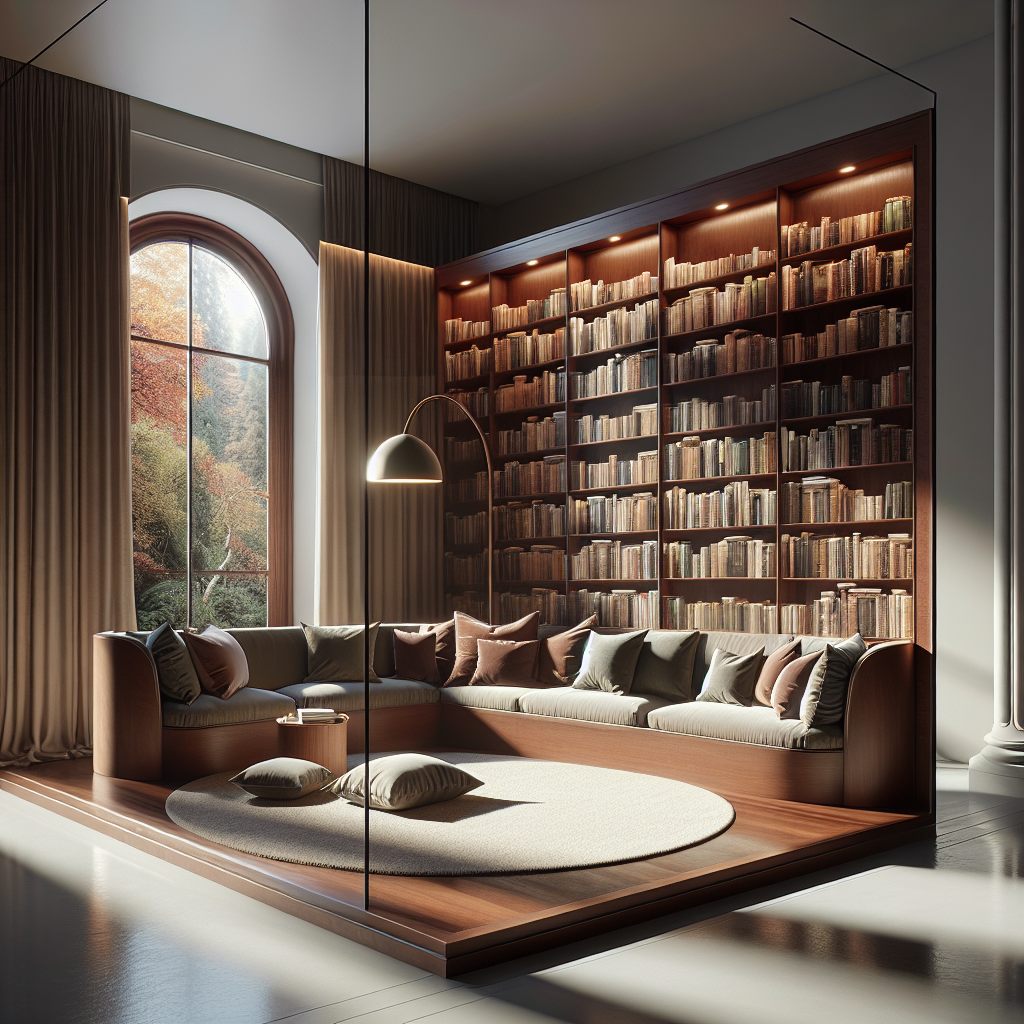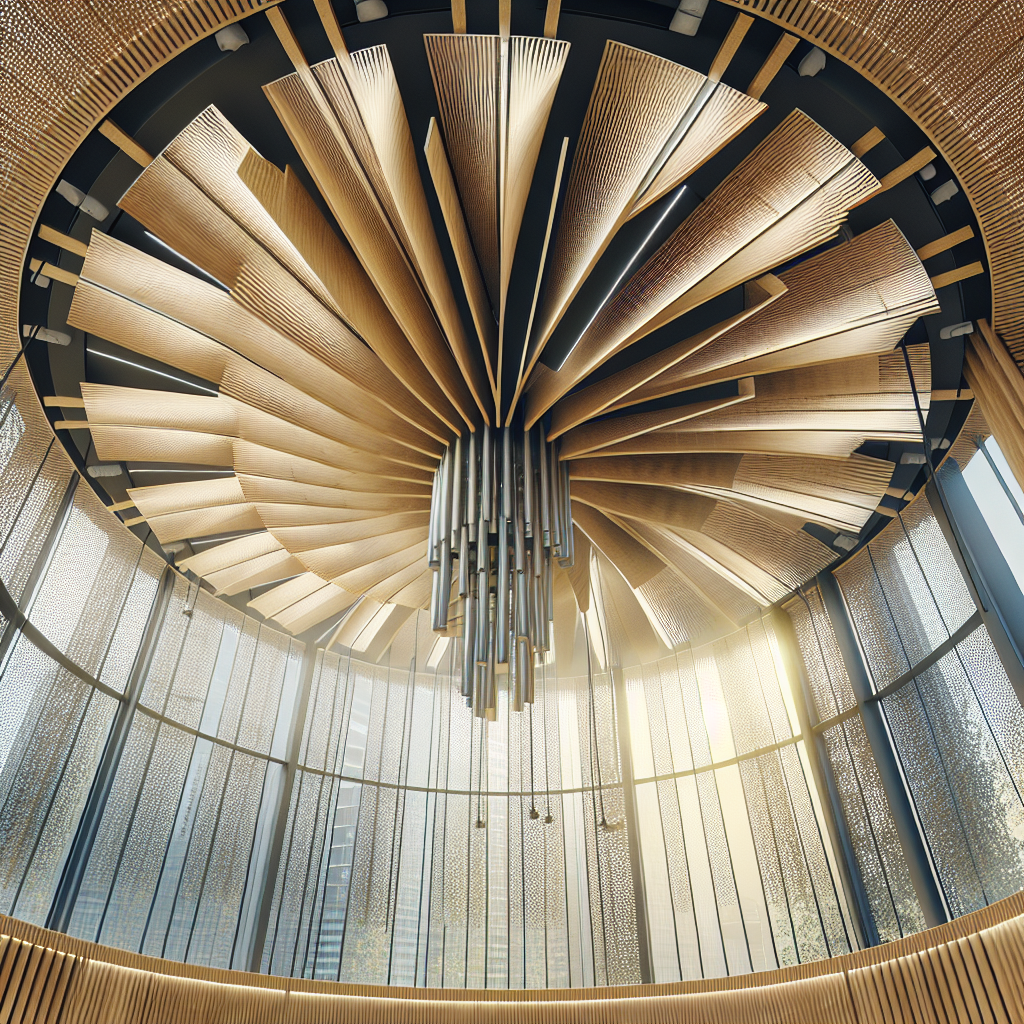Designing for Solitude: Creating Intimate Spaces in the Age of Open-Plan Living

Designing for Solitude: The Art of Crafting Intimate Spaces Amidst Open-Plan Dominance
The modern design narrative has long championed the open-plan living concept, a spatial arrangement that epitomizes fluidity, communal living, and a bright, airy aesthetic. Yet, as we navigate the complexities of contemporary life, the craving for intimate spaces—sanctuaries where solitude and serenity can be embraced—has surged. In this era of perpetual connectivity, the allure of designing for solitude has become a pivotal theme in the realms of architecture and interior design.
As we delve into the intricacies of creating such personal havens, it’s essential to acknowledge that the quest for solitude is not about isolation; rather, it’s about fostering a dialogue with oneself amidst the cacophony of the outside world. This design approach is a nuanced ballet of aesthetics, functionality, and emotional resonance, crafting spaces that are not only physically separate but also imbued with a sense of psychological seclusion.
Reimagining the Nook: The Renaissance of Personal Retreats
The modern nook is a testament to the ingenuity of designers who reimagine corners and alcoves as spiritual retreats. These are the alcoves where one can delve into a book, meditate, or simply exist in a moment of quietude. The transformation of these spaces into personal retreats is a subtle rebellion against the open-plan doctrine, a renaissance of the traditional study or reading room.
The essence of these intimate spaces lies in their bespoke nature. Tailored to the individual’s needs, these nooks are a reflection of personal style and functional requirements. Whether it’s a window seat ensconced in lush cushions or a minimalist Zen corner, these spaces are sanctuaries of the self, designed to resonate with the occupant’s innermost desires for peace and quiet.
Material Matters: Textures and Tones that Speak to Solitude
The materials chosen for these intimate spaces are pivotal, for they are the tactile and visual messengers of comfort and calm. Soft, plush textiles, warm wood tones, and natural fibers speak to our innate desire for tactile comfort, while the interplay of light and shadow through strategic lighting design can set the mood for introspection and repose.
Acoustic design also plays a critical role in these settings. The incorporation of sound-absorbing materials and elements that mitigate noise pollution is not merely a functional necessity but a design statement that underscores the importance of auditory solitude in our sensory-laden lives.
Strategic Spatial Planning: The Blueprint of Intimacy
The architectural layout is the blueprint upon which intimate spaces are built. It’s a strategic dance of spatial planning where barriers are introduced thoughtfully within open-plan settings. Room dividers, sliding panels, or even bookcases can serve as transitional elements that delineate personal spaces without disrupting the overall flow of the home.
This spatial choreography extends to the outdoors as well, where landscape design can create secluded pockets within gardens or terraces—a nod to the traditional concept of the secret garden as a place of private reflection and solace.
Technology and Solitude: A Delicate Balance
In the age of smart homes and ubiquitous technology, the relationship between solitude and digital connectivity is a delicate one. The design of intimate spaces often involves a conscious decision to either incorporate or eschew technology. For some, a space equipped with the latest smart home features may be the epitome of personal comfort, while for others, a tech-free zone is essential to disconnect and decompress.
The key lies in customization—understanding that the definition of solitude varies from person to person, and the role of technology in these spaces should be tailored accordingly. It’s about creating an environment that supports the individual’s version of solitude, whether that means streaming a favorite playlist or enveloping oneself in the hush of a tech-free cocoon.
Lighting the Way: Illuminating Intimate Spaces
Lighting is the unsung hero of intimate space design, with the power to transform the ambiance of a room instantaneously. The choice of lighting—be it the soft glow of a table lamp or the natural luminance from a strategically placed skylight—can make or break the sanctuary-like feel of a personal retreat.
Designers often opt for layered lighting schemes that allow for flexibility, enabling the occupant to adjust the brightness and temperature of the light to suit their mood or activity. This attention to the subtleties of illumination is not just about aesthetics; it’s about crafting an atmosphere that fosters the introspective and restorative experience of solitude.
Conclusion: The Intimate Space as a Reflection of Self
The creation of intimate spaces within the context of open-plan living is more than a design trend; it’s a reflection of a growing collective yearning for moments of personal sanctuary. These spaces are not just physical retreats but emotional landscapes that provide a canvas for self-expression and inner dialogue.
As we continue to explore the boundaries of design and architecture, the art of crafting intimate spaces stands as a testament to our inherent need for balance. It’s a celebration of the individual’s right to solitude and a reminder that in the midst of our interconnected world, the most profound connection is the one we have with ourselves.








